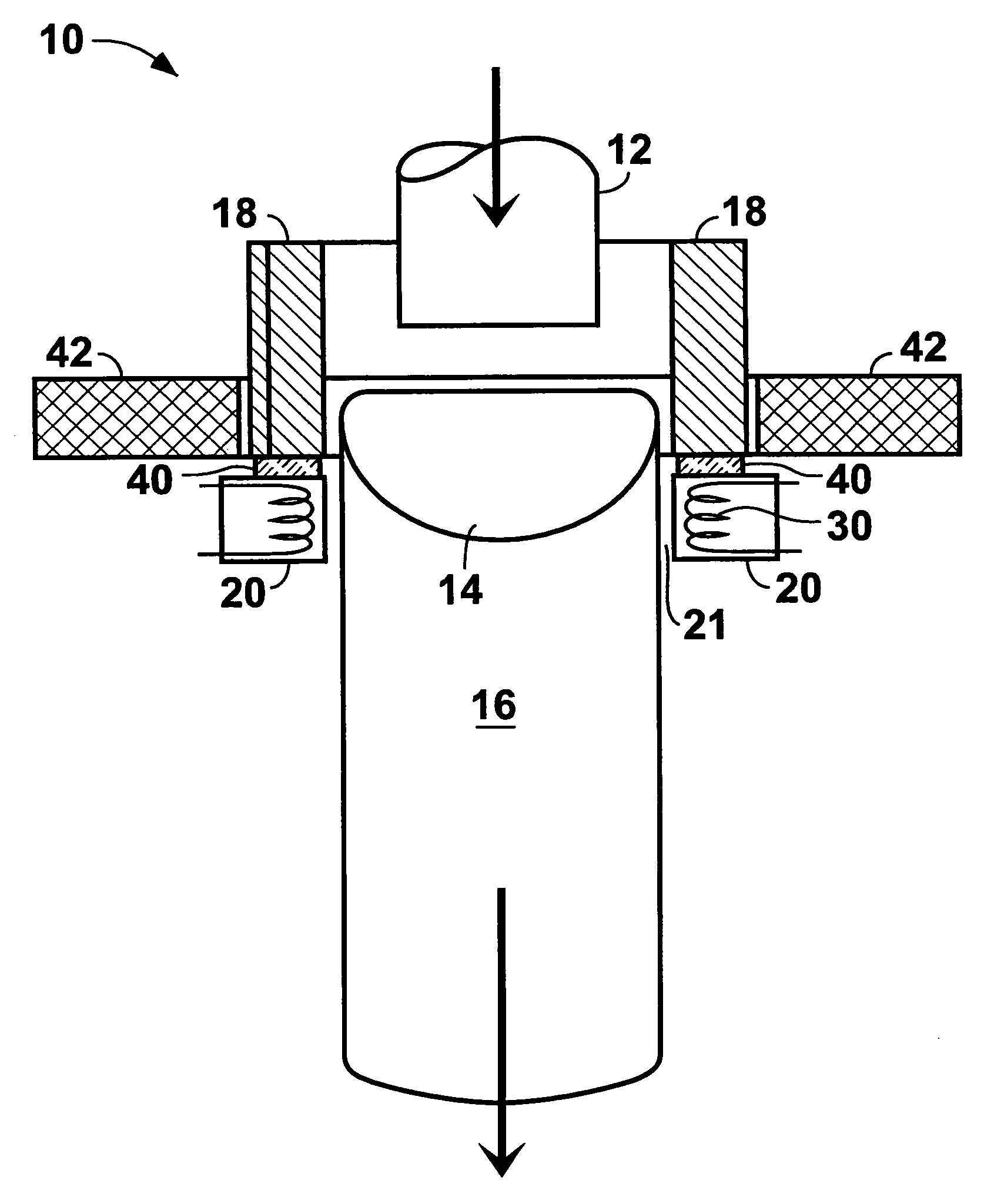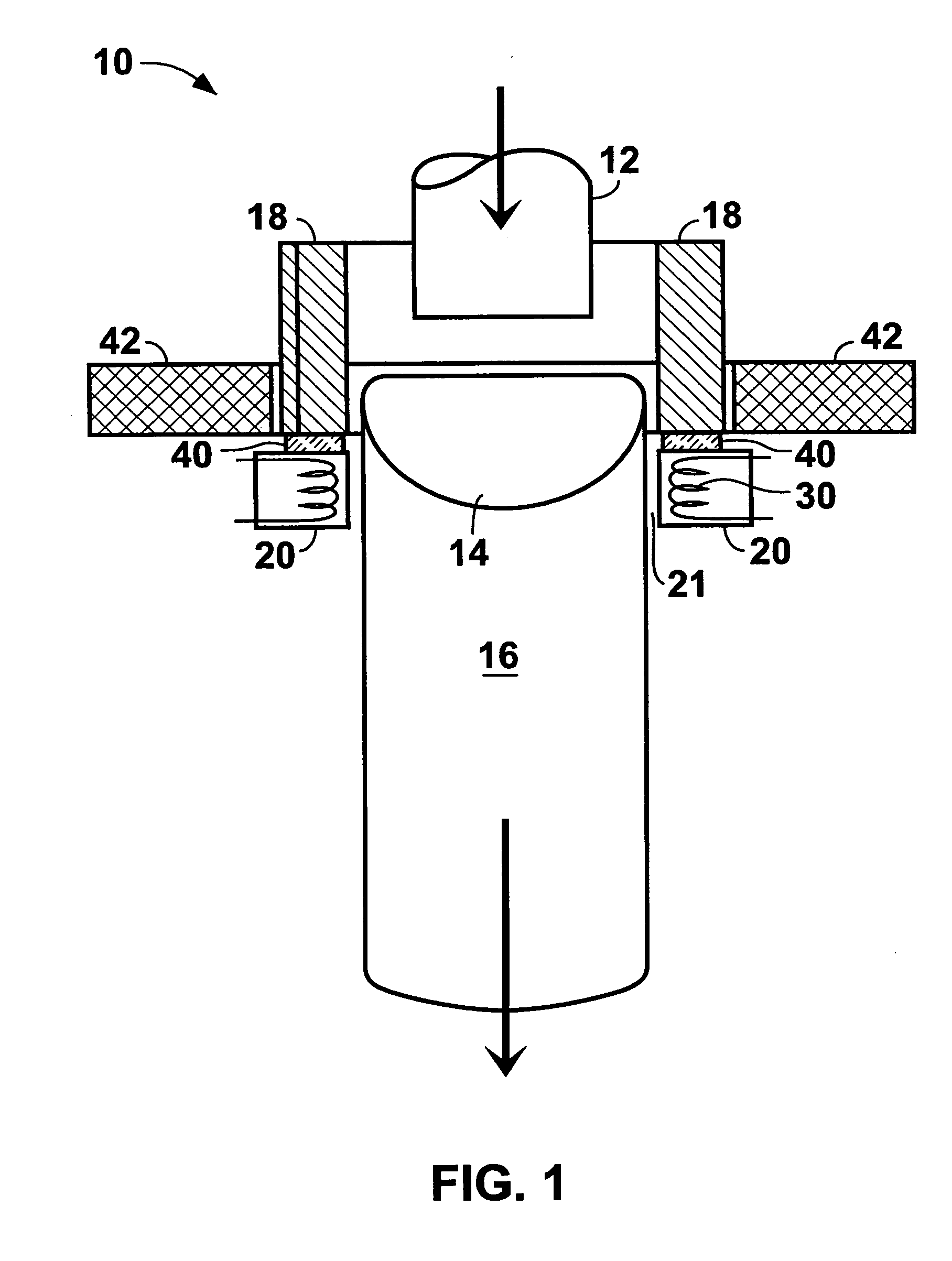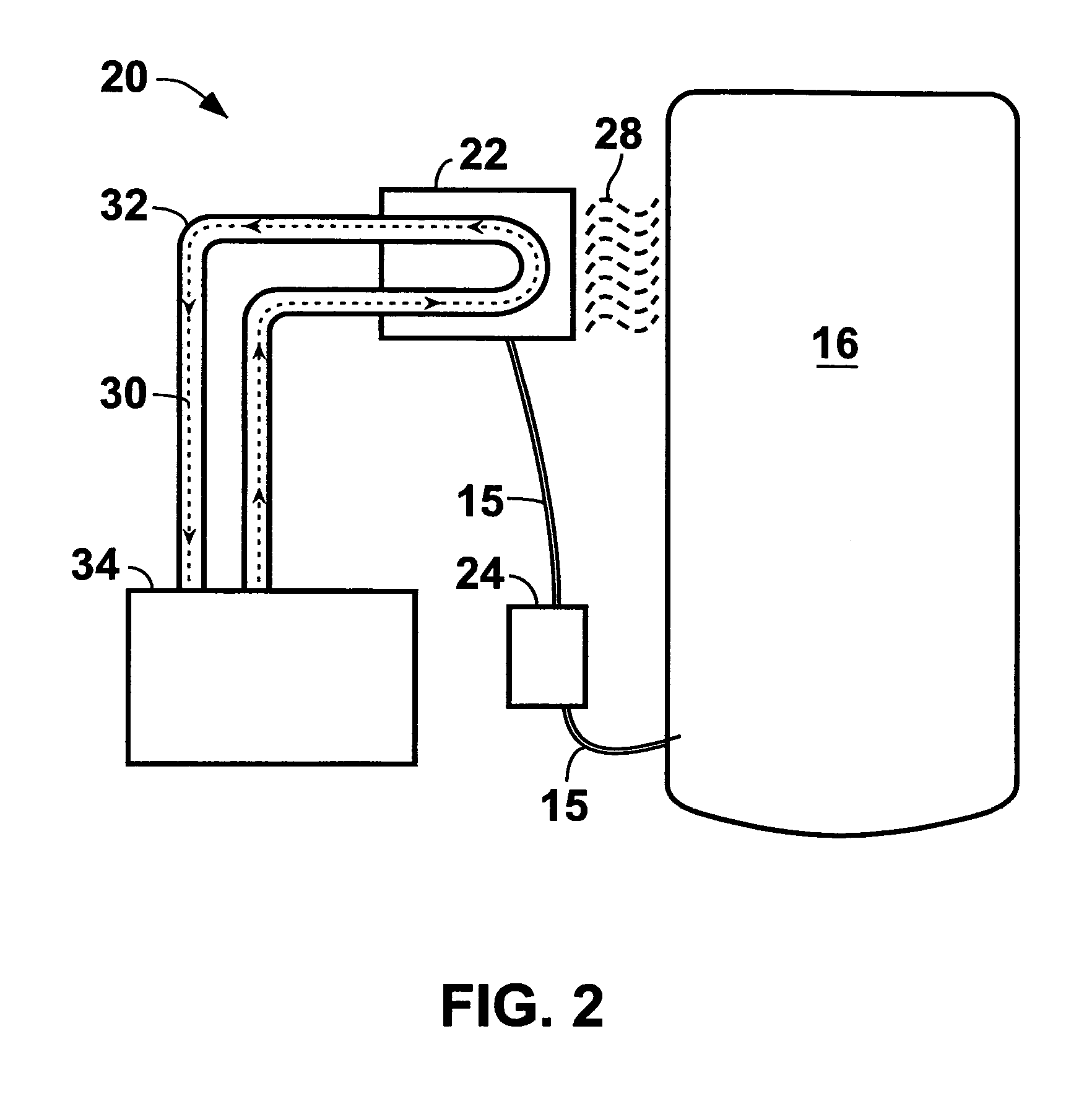Method and apparatus for treating articles during formation
a technology for treating articles and forming parts, applied in the direction of electric furnaces, furnace types, furnaces, etc., can solve the problems of inability to accept segregation of alloys, affecting the mechanical properties of alloys, and the typical cooling rate of ingots formed using water-cooled molds
- Summary
- Abstract
- Description
- Claims
- Application Information
AI Technical Summary
Problems solved by technology
Method used
Image
Examples
Embodiment Construction
[0021]FIG. 1 illustrates aspects of one embodiment of a melting and refining apparatus 10 for carrying out an embodiment of the method disclosed herein. The apparatus 10 may include a vacuum chamber so that melting and solidification occurs in a partial vacuum, such as, for example, no more than about 10−3 atmosphere. Utilizing a VAR process and a conventional VAR power supply (not shown), an electrode of an alloy is melted and refined in the apparatus 10 to form an ingot. VAR is a consumable-electrode remelting process in which heat is generated by an electric arc struck between the electrode and the ingot. The VAR process is well known and widely used, and the operating parameters that will be necessary for any particular electrode type and size may be ascertained readily by one having ordinary skill in the art. Accordingly, further detailed discussion of the general construction or mode of operation of a VAR apparatus and the particular VAR operating parameters that may be used t...
PUM
| Property | Measurement | Unit |
|---|---|---|
| diameter | aaaaa | aaaaa |
| distance | aaaaa | aaaaa |
| voltage | aaaaa | aaaaa |
Abstract
Description
Claims
Application Information
 Login to View More
Login to View More - R&D
- Intellectual Property
- Life Sciences
- Materials
- Tech Scout
- Unparalleled Data Quality
- Higher Quality Content
- 60% Fewer Hallucinations
Browse by: Latest US Patents, China's latest patents, Technical Efficacy Thesaurus, Application Domain, Technology Topic, Popular Technical Reports.
© 2025 PatSnap. All rights reserved.Legal|Privacy policy|Modern Slavery Act Transparency Statement|Sitemap|About US| Contact US: help@patsnap.com



